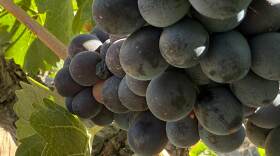-
Washington state’s largest winery, Ste. Michelle Wine Estates, has been purchased by the Wyckoff family. The Wyckoffs own a variety of agricultural businesses across Washington state.
-
(Runtime 4:11) On the south slope of Rattlesnake Mountain in the Yakima Valley, north of Prosser, water is measured by the puny drip. Jim Willard grows…
-
The massive Northwest wine beast Ste. Michelle Wine Estates has announced to its Washington wine grape growers that it’s not taking nearly half of its…
-
The multi-billion dollar wine industry in Washington state would not be what it is today without the field workers. The storytelling program Breaking Ground captures the stories about growers and winemakers and also the field workers.
-
Researchers from three West Coast universities have made a new discovery about how smoke affects wine grapes. Correspondent Lauren Paterson reports.…
-
(Runtime 1:21)Red Mountain Washington is world-renowned for its wine grape production.It’s unique character made it designated as an American Viticultural…
-
The Washington Wine Commission has a new program for growers called Sustainable WA. It’s a three-pronged approach enabling Washington Wines to be a leader in the industry. It focuses on sustainability in growing grapes, being stewards to the land, and having a healthy workforce.
-
When wineries release their new vintages to the public it’s often called “Spring release.” Those bottlings have been cooped up all winter aging. So have winter-weary patrons. Those who are fully vaccinated against COVID-19 are stepping out to wineries and meeting in small groups both outdoors and in.
-
Even if a wildfire doesn’t burn a vineyard, smoke can get into grapes. Smoke taint tastes like a small bit of ashtray, creosote post or burnt tires — so it’s not desirable in your pinot or merlot.
-
To qualify as an AVA, a wine grape-growing region must set itself apart with climate, soil, elevation and physical features. A new one doesn’t come around very often. The Royal Slope AVA is just over 156,000 acres, and is north of the Tri-Cities.
Play Live Radio
Next Up:
0:00
0:00
Available On Air Stations










